What is a White Dwarf?
A white dwarf is a hot, compact corpse of a low mass star, typically with a mass similar to that of the Sun compressed to a volume the size of Earth (Bennett G-10). A white dwarf marks the endpoint of stellar evolution for low/medium mass stars. The basic properties of white dwarfs, according to the Hertzsprung-Russell Diagram, are that they have low masses, very hot surface temperatures, and are not very luminous. In short, a white dwarf is created by a lack of nuclear fusion and only survives due to electron degeneracy.
Below is a photograph of a white dwarf in our universe (Credited to NASA)
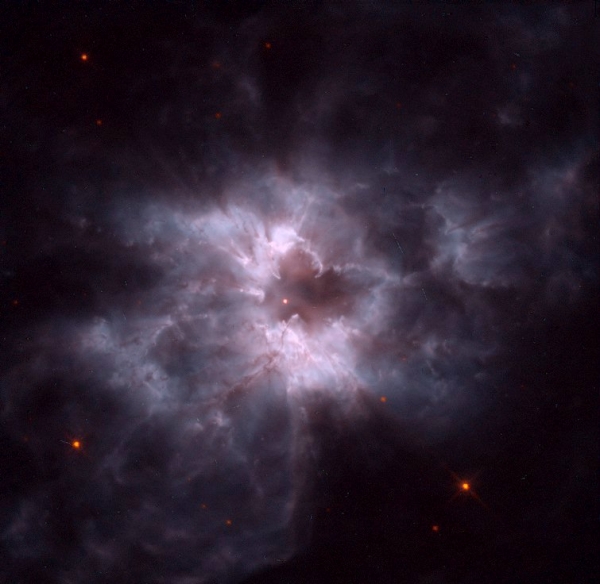
How Does a White Dwarf Form?
White dwarfs mark the endpoint of stellar evolution for low to medium mass stars. Once stars with a solar mass less than 4 have exhausted all their nuclear fuel, they begin to collapse because these low/medium mass stars lack enough energy to ignite carbon fusion. After these stars begin to collapse, the stars' outer layers start to blow out; this expanding shell of gas is known as a planetary nebula. The planetary nebulae appear to mark the transition of a medium mass star from a red giant into a white dwarf. Even though the outer material is expanding and cooling, the core still remains intact. The core temperature increases to greater than 100,000 Kelvin. Since the white dwarf is incapable of creating internal pressure from nuclear fusion, the gravity crushes down until the electrons within the white dwarf’s atoms are smashed together. An inert mass of carbon and oxygen builds up in the center of the white dwarf because carbon fusion cannot take place. This is why white dwarfs are composed mainly of carbon and oxygen, as this is what remains when the outer layers are shed. The diagram below shows the general formation of a white dwarf (Lochner, Jim, 1997).
According to the Pauli Exclusion Principle, no two electrons within the same atom can be in the same energy level if they have identical spins. Therefore, only two electrons can occupy a single energy level. Since all the energy levels within a white dwarf are filled to capacity (two electrons per energy level) the white dwarf becomes degenerate. Thus, gravity cannot compress the star anymore because quantum mechanics states that there is no more vacant space to be taken up. As such, the white dwarf survives due to electron degeneracy, not due to nuclear fusion (Lochner, Jim, 1997).
What is the Size of a White Dwarf?
Due to electron degeneracy, the more massive a white dwarf is, the smaller it is. The reason this happens is because there are more electrons that must squeeze together in order to maintain enough outward pressure to support the extra mass. That is why there is a limit to the mass of a white dwarf. Subrahmanyan Chandrasekhar discovered the limit to be 1.4 times the mass of the Sun; this limit is also known as “Chandraekhar limit” (Lochner, Jim, 1997). | 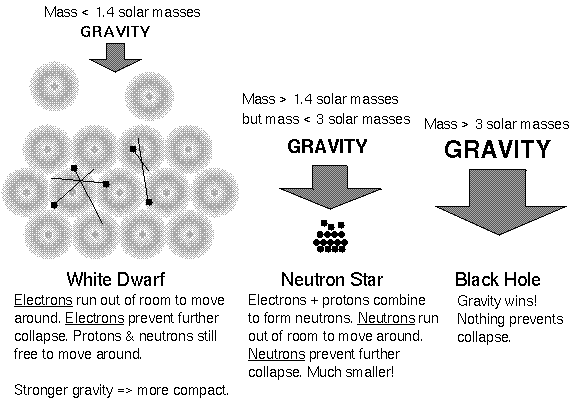 |
The Atmosphere of a White Dwarf
The atmosphere of white dwarf is very different from that of the earth since it has a surface gravity 100,000 times that of the earth. Therefore, the heavier atoms sink while the lighter ones remain at the surface. Most white dwarfs have atmospheres that are comprised almost entirely of hydrogen and helium. It is also believed that white dwarfs have a 50 km thick crust comprised of a crystalline lattice of carbon and oxygen atoms (Lochner, Jim, 1997).

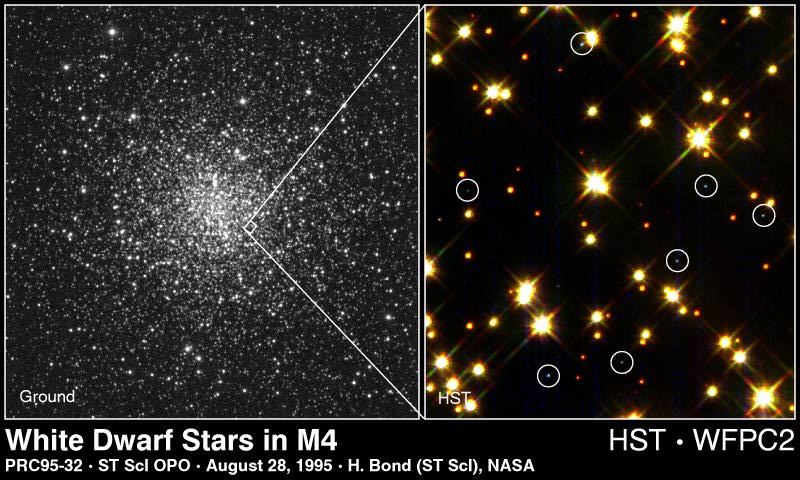
Type 1a Supernova A type 1a supernova occurs in some binary star systems when a carbon-oxygen white dwarf accretes matter from a companion star. The increase in mass causes the core to reach a critical density of 2 x 10^9 g/cm³, meaning the mass rises above the Chandrasekhar limit. Therefore, the star begins to collapse. The collapsing of the star increases the core’s temperature, which then ignites carbon and oxygen to fuse explosively, thus destroying the white dwarf with the only remain being a nebula. A type 1a supernova has a peak luminosity of about 10^10Lsun and can be observed in all galaxies. Also, because there is no material surrounding the core of a white dwarf (unlike Red Giants), Type 1a supernova is more luminous than Type II supernova (Nicholson, Iain, 2001). | 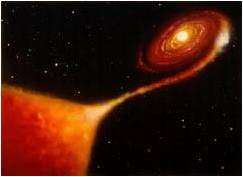 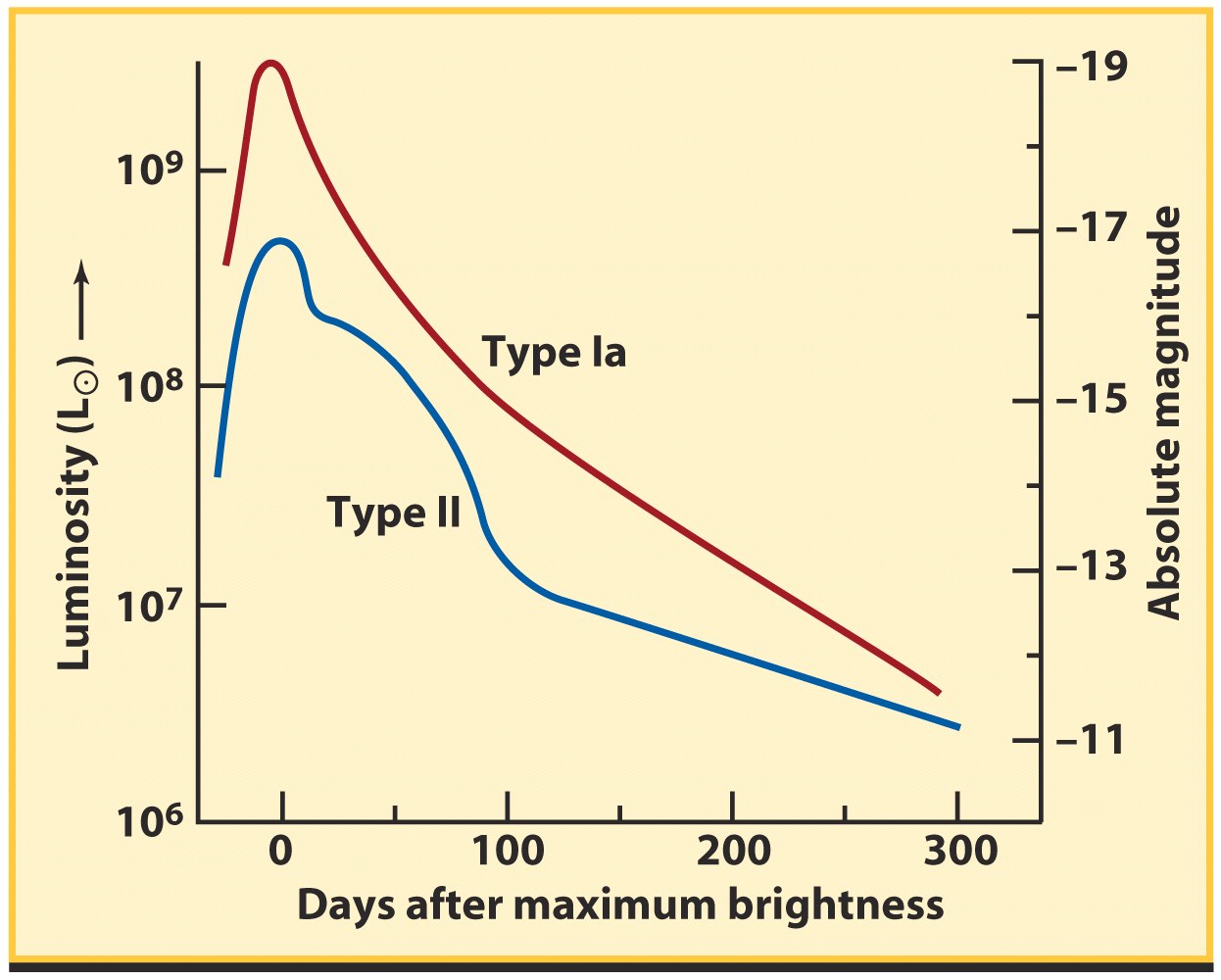 |